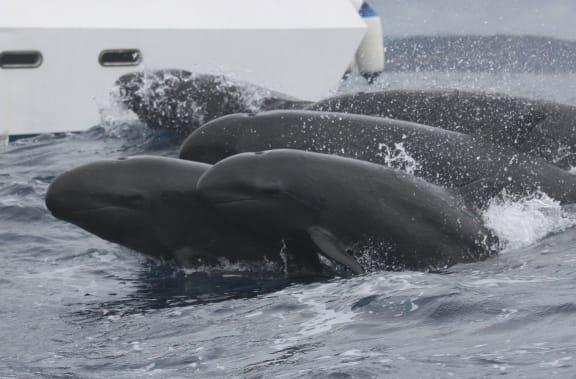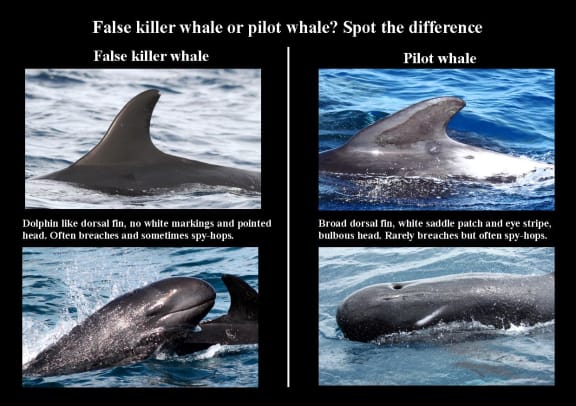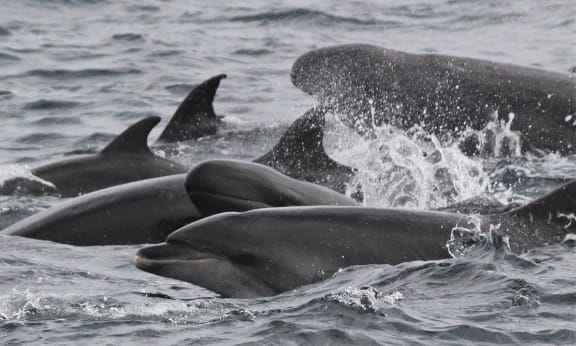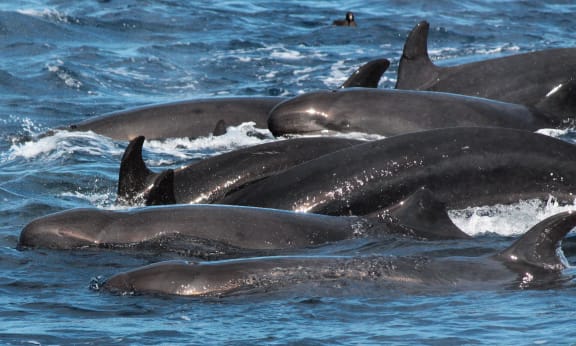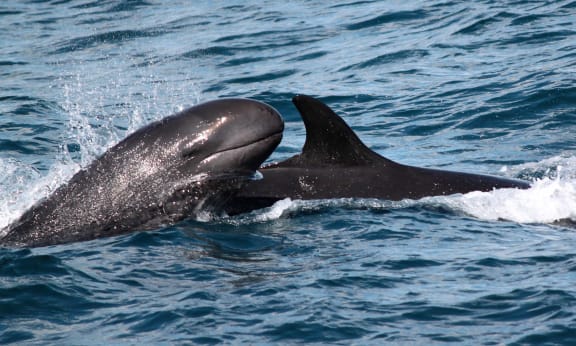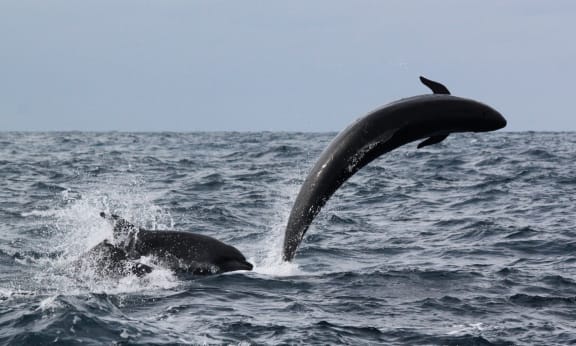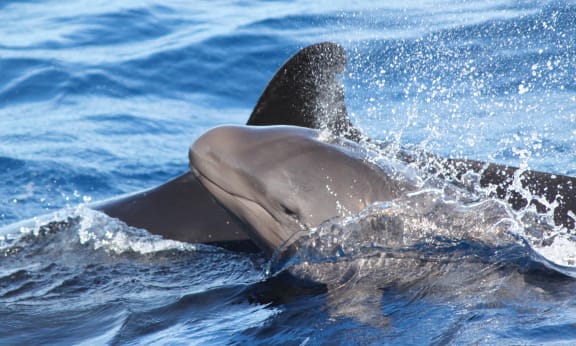Between December and May every year, 150 to 200 false killer whales visit New Zealand shores. But what these cetaceans get up to when they're not here remains a mystery.
Why do they travel with a pack of bottlenose dolphins? Where do they go in winter? And how did a mammal that looks like a slimmer pilot whale end up with such a name?
Marine scientist and self-described ‘whale geek’ Jochen Zaeschmar is on a mission to understand more about these temporary residents, a mission which has attracted the interest of a BBC documentary series.
He speaks to Kathryn Ryan from a boat in Opua.
False killer whales were given their name in 1846 because of similarities between their skull and (real) killer whales, or orca. They were first thought to be an extinct relative.
Jochen says that in other parts of the world false killer whales can be truer to their name and attack other whales and dolphins, but those who visit New Zealand seem to be lovers, not fighters – engaged in a mutually supportive relationship with groups of bottlenose dolphins.
Maximising food and safety in numbers are likely the reciprocal benefits for the relationship, but Jochen says we have a lot to learn about its nature.
Where does this mixed pack spend the New Zealand winter? Somewhere warmer is all we know so far.
Jochen says he has observed bite marks on the bottlenose dolphins which are the work of cookiecutter sharks that live in warmer offshore waters.
Despite cookiecutters helping themselves to bite-sized chunks of their travelling companions, false killer whales are currently considered a ‘non-threatened’ species in New Zealand.
Jochen believes the six months they spend here should give them status as ‘locals’ and protected as such.
Jochen will be speaking at the Hauraki Gulf Marine Park Seminar as part of Conservation Week 2016.
